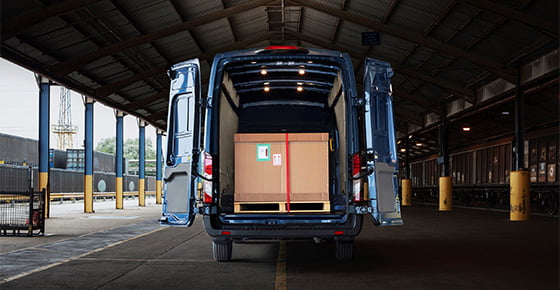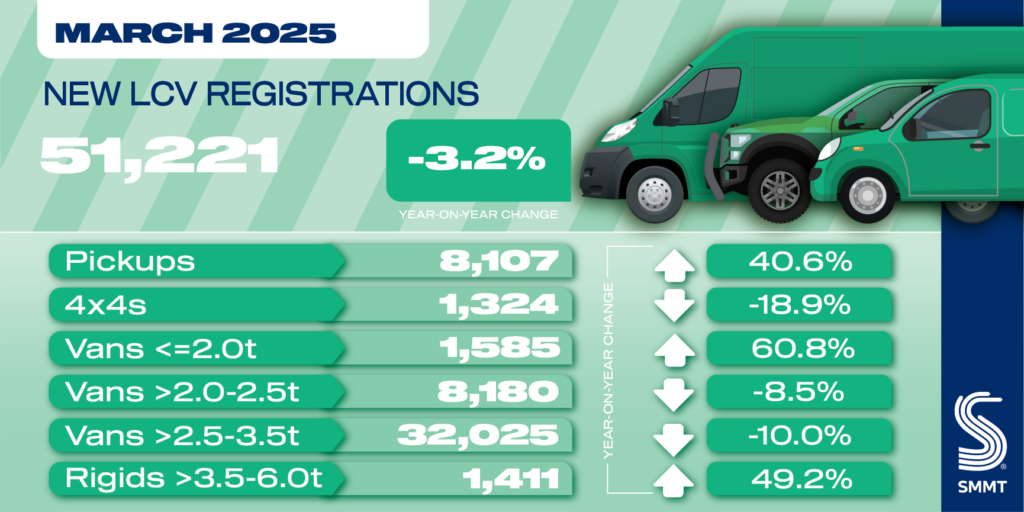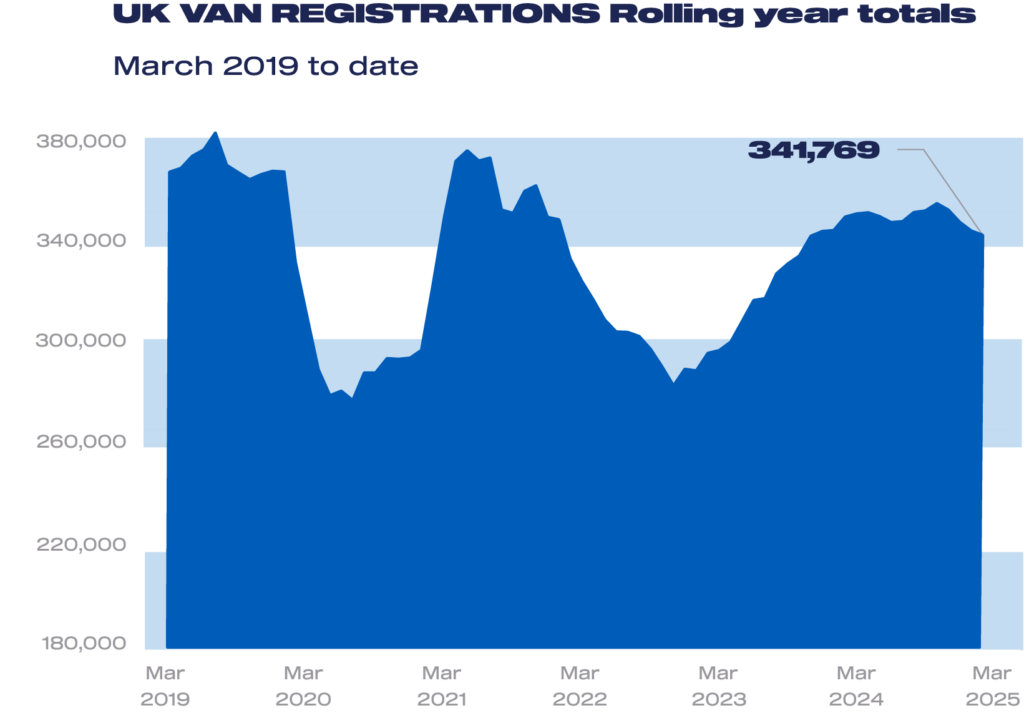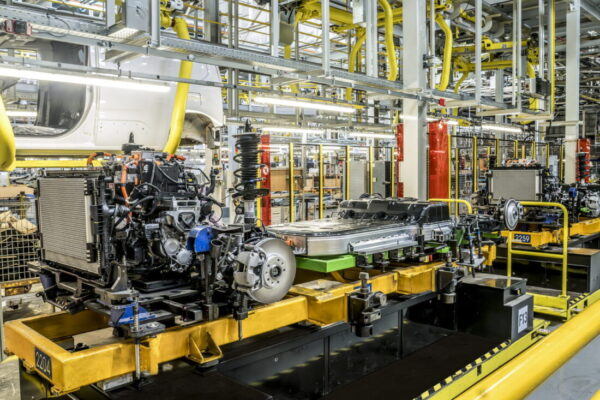
- New light commercial vehicle (LCV) registrations down -3.2% in March, marking fourth consecutive monthly decline.
- Surging demand for pick-ups ahead of double-cab tax impact, while other key segments bar small vans shrink in volume.
- Record monthly volume of electric uptake after 40.3% growth – but still represents just half the 16% market share that is mandated for 2025.
Data download
new LCV registrations March 2025

UK deliveries of new light commercial vehicles (LCVs) dipped by -3.2% in March with 51,221 vans, 4x4s and pick-ups joining UK roads, according to the latest figures published today by the Society of Motor Manufacturers and Traders (SMMT). The decline, while compared with a particularly strong March last year,1 was the fourth consecutive monthly fall in new LCV market activity as weak business confidence continues to hold back investment in the very latest models.
Lower volumes were driven by -10.0% fewer registrations of the largest vans which, at 32,025 units, still remain the most popular segment with 62.5% of the overall market. Deliveries of medium sized vans and 4x4s also fell, by -8.5% and -18.9% to 8,180 units and 1,324 units respectively. Positively, rising demand for smaller vans continued for the 13th successive month, up 60.8% to 1,585 units – now claiming 3.1% of the market. Registrations of new pickups, meanwhile, surged by 40.6% last month with 8,107 of the latest models and variants joining UK roads – as significantly more businesses invested in these operation-critical workhorses ahead of measures to treat double-cabs as cars for benefit in kind and capital allowance purposes.
The fiscal measures, coming into effect in early April, will heap additional costs on businesses in sectors that make an important contribution to national and local economic growth – from automotive and farming to construction, utilities and sole traders – causing many to hold off investing, keeping more polluting vehicles on the road and, counterproductively, reducing tax revenues. Given the UK’s highly challenging economic environment, SMMT urges government to delay the measures for at least one year so industry, businesses and vehicle buyers can prepare for the change.
More positively, demand for new battery electric vans (BEVs) weighing up to 4.25 tonnes2 grew for the sixth month in a row, up 40.3% to 4,215 units – a new monthly high. The very latest, greenest models have taken 8.3% of the market in the first three months of 2025,3 up 2.8 percentage points on the same period last year – impressive growth thanks to immense manufacturer investment to offer more than half of all van models on the UK market as zero emission.
The Plug-in Van Grant remains fundamental to supporting current levels of operator uptake, however, current levels are little more than half the 16% zero emission market share which government has mandated for 2025. Success, therefore, requires urgent action to encourage more operators to switch, including guarantees that LCV-suitable infrastructure will be ramped up, along with workable regulation that ensures market growth and decarbonisation.

Mike Hawes, SMMT Chief Executive
Vans, pick-ups and 4x4s are critical for business operations across the UK so four months of falling investment is concerning and reflects weak confidence, with further constraints set to impact the pick-up segment.
It is positive, however, that electric uptake continues to rise thanks to growing model choice. Even so, with demand still well below 2025 ambitions, suitably bold plans for infrastructure rollout and workable regulation are needed to grow operator confidence and the investment that is needed.
Notes to editors
- New LCV registrations, March 2024: 52,916 units.
- SMMT’s BEV LCV registration data reflects the Vehicle Emissions Trading Scheme, in which BEVs weighing >3.5-4.25t contribute towards each manufacturer’s target, in addition to those weighing ≤3.5t.
- New BEV LCV registrations, January-March 2025: 7,092 units (8.3% market share); March 2025: 4,215 units (8.2% market share).


